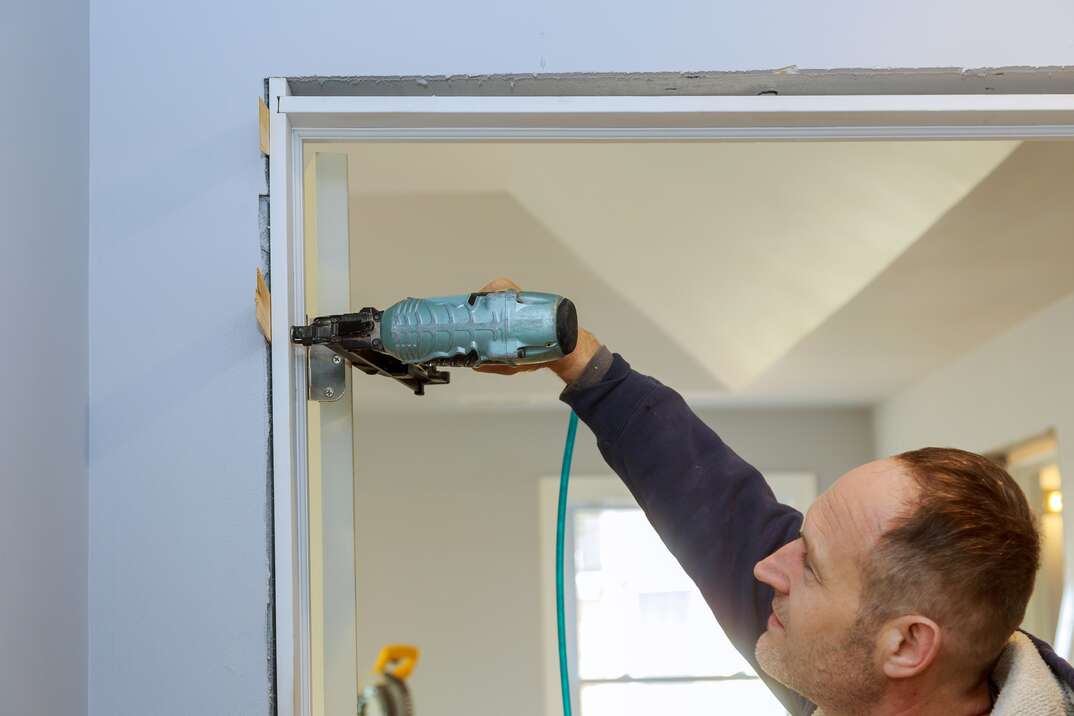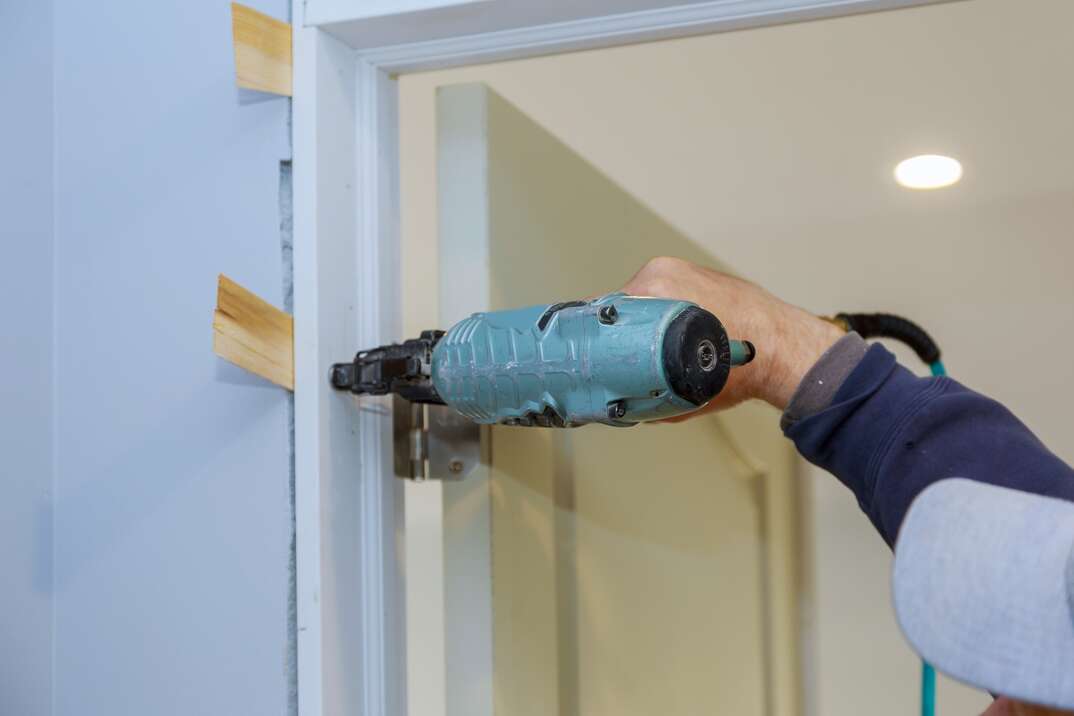How to Install or Replace a Door Frame: An Open-and-Shut Guide

Installing a Door Frame at a Glance
- Step 1: Remove door, casing and frame
- Step 2: Assemble new frame
- Step 3: Mount frame
- Step 4: Attach trim
Okay, so maybe replacing a door frame isn’t at the top of your “Fun Projects You Can’t Wait to Tackle” list for this weekend, but cheer up; it’s not all bad. In fact, with the proper door frame kit, a few tools you likely already have on hand and some basic construction know-how, you can install or replace a door frame in as little as a few hours. Then, you can get back to the real weekend fun.
This May Also Interest You: The Frame Game: Here’s How Much It’ll Cost to Install or Replace a Door Frame
The bonus good news here is that replacing an interior door frame is the same step-by-step process as replacing an exterior one. Follow these methods any time you need to install or replace either.
Step 1: Remove the Existing Door, Casing and Frame
The initial step in any door frame installation process is to remove the existing door, if there is one. First, you’ll need to pull out the hinge pins. You may need to loosen the pins by placing a small Phillips head screwdriver at the bottom of the pin and tapping lightly with a hammer. Alternatively, you can wedge a flat head screwdriver under the top lip of the pin and tap upwards. Once the pins are out, take the door off of the hinges and set it aside. Then, remove the hinges from the door jamb using an electric screwdriver.
After the door is off, you’ll need to remove the trim — or the casing — from around the door. Using a utility knife, cut the bead of caulk where the jamb meets the wall. This will loosen the trim from the wall and make it much easier to pry off. Trying to pry the trim off without first cutting along the caulking might result in unnecessary damage to the wall. Once the caulking has been cut, use a pry bar to carefully remove the trim from the doorway.
Next, measure the door frame so that you can find the right size frame kit. Most doors come in fairly standard sizes, so you shouldn’t have too much trouble finding one that works.
Use a saw to cut through the door jamb horizontally on each side. Be sure to use a handsaw, as you don’t want to accidentally saw through and damage the wall. Then, use a pry bar once more to separate the pieces of the jamb from the wall. When these pieces have been removed, take a hammer or pliers and remove any nails that are protruding from the opening.
 -------------------------------------------
-------------------------------------------
Step 2: Put the Frame Together
Before beginning your installation, you’ll need to assemble your door frame kit. Keep in mind that if the existing door has been damaged along with the frame, your best bet is to purchase a prehung door that comes with its own frame. But, if your door is in good condition and you want to reuse it, you can just replace the frame. Plus, buying a full prehung door kit is much more expensive than a frame kit alone.
First, lay the header and the side jambs on the ground and drill screws through the jambs to attach them to the header. As you’re doing this, make sure the edges of the header and jamb are flush.
Once these are attached, your frame is basically assembled. However, you’ll still need to brace it so that the jambs stay parallel. Screw a small, thin piece of wood (2 inches by 2 inches should do the trick) near the bottom of the frame. Then double-check your frame to make sure the jambs are parallel and the header is perpendicular to the jambs. Take extra care here, as it’ll be crucial that your jambs are plumb once they’re in the door opening.
More Related Articles:
- How Much Does It Cost to Install Doors?
- How to Remove a Doorknob: A Quick Guide
- Holey Door Damage! How to Repair a Hole in Your Door
- How to Install a Storm Door: Your 5-Step Instructional Guide
- How Much Does It Cost to Install a Storm Door?
 -------------------------------------------
-------------------------------------------
Step 3: Mount the Frame
When the frame has been put together, pick it up and carefully place it into the rough opening. If all goes according to plan, the frame should fit into the rough opening well. If there are any gaps, you may need to use shims to fill these in. Double-check the jambs to make sure they’re level, then break the excess shim off. When the frame looks good, use galvanized casing nails to nail it in place on the hinge side first.
Once the frame has been nailed into place, use spray foam insulation to fill the gap between the frame and the wall. If you haven’t used foam insulation before, be aware that it can be tricky (and sticky). Try not to spray too much in the gap, as it expands quickly. You’ll want to wait until the insulation is dry before attaching the trim. Check the instructions on the can to find out how long the foam will take to dry.
Step 4: Attach the Trim
If your old trim is still in good condition, you can simply nail it back into place. That’s certainly the simplest option. However, if you need to, you can buy pre-painted trim from any big box or hardware store. Cut the trim pieces to size with a circular saw and use a miter saw to cut 45-degree angles on the corners of each piece. Once the trim has been accurately cut, nail the trim into place using finishing nails. But before you start hammering away, make sure the trim is level.
When the trim has been nailed, caulk its edges and fill nail holes for a smooth finish. You can then sand and paint, if desired.
And there you have it. You can now check “replacing a door frame” off your to-do list and cross your fingers that your weekend work is done. Now hurry and hide before a family member finds another project for you to tackle.
Speaking of repair projects, why not let the experts take care of bigger ones for you? With a home repair plan from HomeServe, you can rest easy knowing assistance with unexpected repairs is only a phone call away. Once you have a plan in place and a covered issue arises, you can simply call our 24/7 repair hotline. See what plans are available in your neighborhood.


